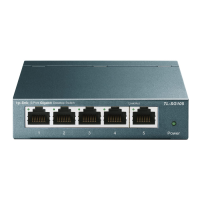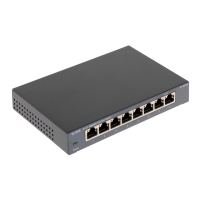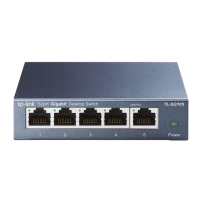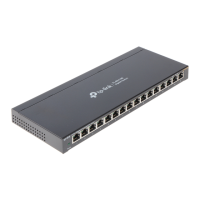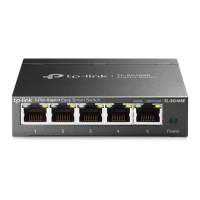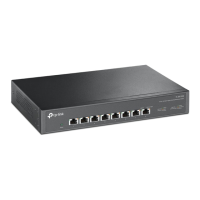142
Member Port Aging Time: Within this time, if the switch does not receive MLD reports from the
member port, it will delete this port from the MLD multicast group. The default value is 260
seconds.
General Query Interval: The interval between the multicast router sends out general queries.
Last Listener Query Interval: The interval between the switch sends out MASQs.
Last Listener Query Count: The number of MASQs that the switch sends before aging out a
multicast address when there is no MLD report response.
MLD Snooping Process
1. General Query
The MLD router regularly sends MLD general queries to query if the multicast groups contain
any members. When receiving MLD general queries, the switch will forward them to all other
ports in the VLAN. The receiving port will be processed: if the receiving port is not a router port
yet, it will be added to the router port list with its router port aging time specified; if the
receiving port is already a router port, its router port aging time will be directly reset.
2. Membership Report
The host will send MLD report messages when it applies for joining a multicast group or
responds to the MLD query message from the router.
When receiving MLD report message, the switch will forward the report message via the router
port in the VLAN, and analyze the message to get the address of the multicast group the host
applies for joining. If the multicast group does not exist, it will create the group entry. The
receiving port will be processed: if the receiving port is a new member port, it will be added to
the forward list of the multicast group with its member port aging time specified; if the receiving
port is already a member port, its member port aging time will be directly reset.
3. Member Leave
The host will send MLD Done message when leaving a multicast group to inform the router of
its leaving.
When Immediate Leave is not enabled in a VLAN and a Done message is received on a port of
this VLAN, the switch will generate MASQs on this port to check if there are other members in
this multicast group. The user can control when a port membership is removed for an exiting
address in terms of the number and interval of MASQs. If there is no Report message received
from this port during the switch maximum response time, the port on which the MASQ was sent
is deleted from the multicast group. If the deleted port is the last member of the multicast
group, the multicast group is also deleted. The switch will send Done message to the router
ports of the VLAN.
In IPv6,Layer 2 switches can use Multicast Listener Discovery (MLD) Snooping to limit the
flooding of multicast traffic by dynamically configuring Layer 2 interfaces so that IPv6 multicast
data is selectively forwarded to a list of ports that want to receive the data. This list is
constructed by snooping IPv6 multicast control packets.
The MLD Snooping function can be implemented on Global Config, VLAN Config, Filter
Config, Port Config, Static Multicast, Querier Config and Packet Statistics pages.

